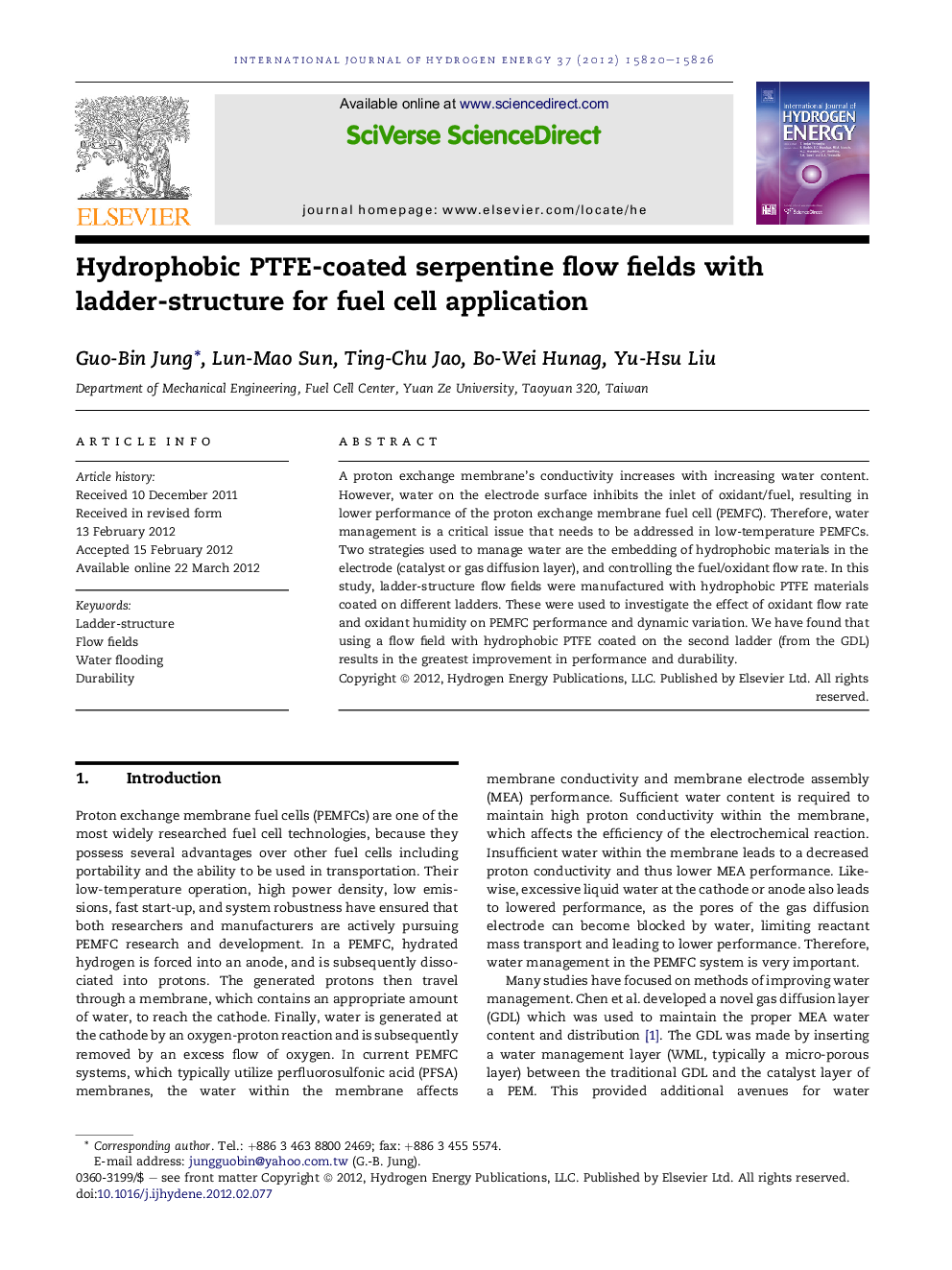| Article ID | Journal | Published Year | Pages | File Type |
|---|---|---|---|---|
| 1274597 | International Journal of Hydrogen Energy | 2012 | 7 Pages |
A proton exchange membrane's conductivity increases with increasing water content. However, water on the electrode surface inhibits the inlet of oxidant/fuel, resulting in lower performance of the proton exchange membrane fuel cell (PEMFC). Therefore, water management is a critical issue that needs to be addressed in low-temperature PEMFCs. Two strategies used to manage water are the embedding of hydrophobic materials in the electrode (catalyst or gas diffusion layer), and controlling the fuel/oxidant flow rate. In this study, ladder-structure flow fields were manufactured with hydrophobic PTFE materials coated on different ladders. These were used to investigate the effect of oxidant flow rate and oxidant humidity on PEMFC performance and dynamic variation. We have found that using a flow field with hydrophobic PTFE coated on the second ladder (from the GDL) results in the greatest improvement in performance and durability.
► Performance of fuel cell incorporated with flow-field without PTFE is poor. ► Performance of fuel cell incorporated with flow-field with proper PTFE is good. ► Performance of fuel cell incorporated with flow-field with excess PTFE is poor.
